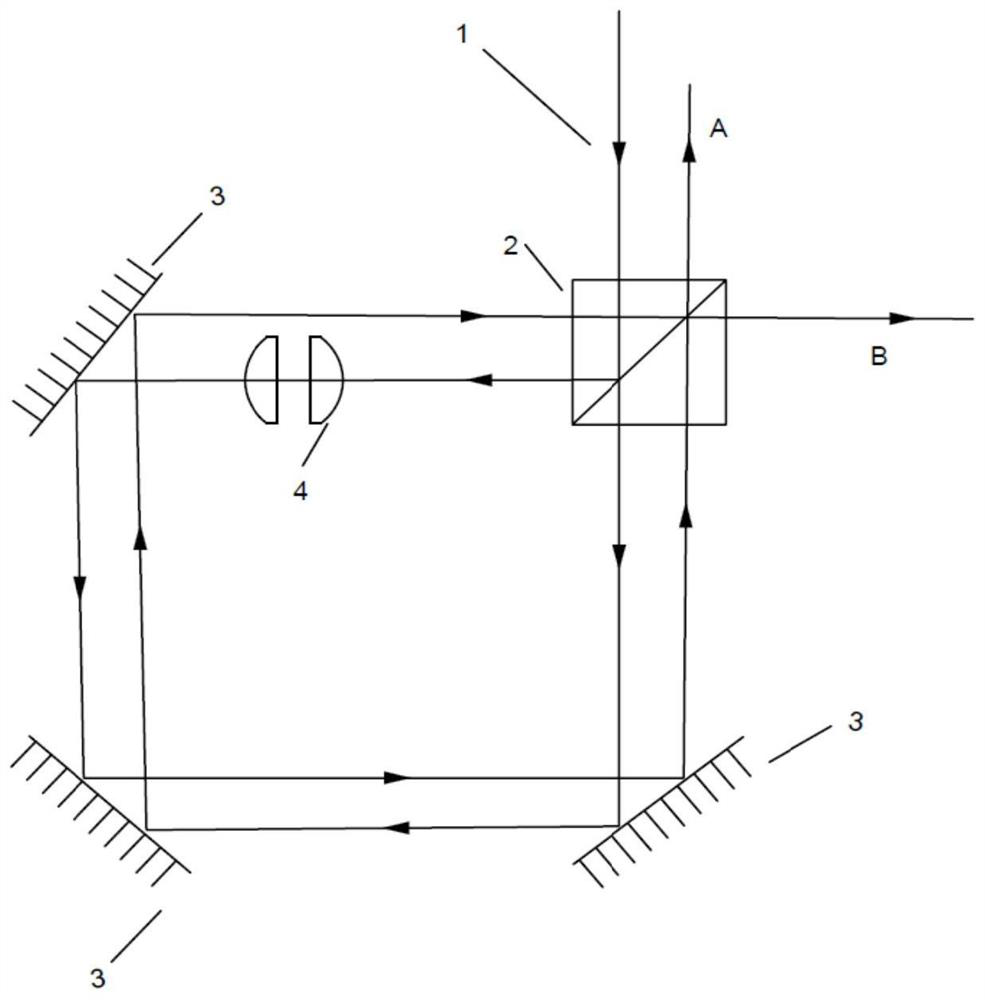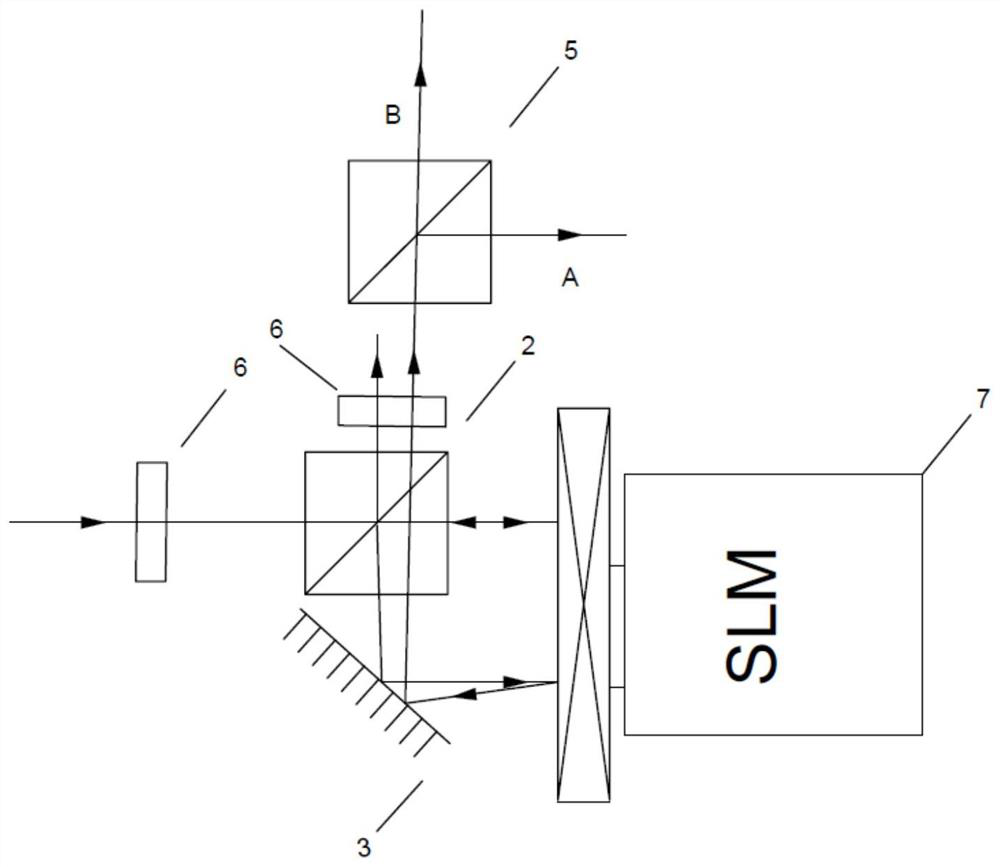A Hermitian-Gaussian mode beam splitter
A beam splitter and mode technology, applied in the optical field, can solve the problems of no beam splitter and complex structure, and achieve the effect of good stability and high precision
- Summary
- Abstract
- Description
- Claims
- Application Information
AI Technical Summary
Problems solved by technology
Method used
Image
Examples
Embodiment 1
[0036] Such as figure 1 As shown, the phase converter is placed horizontally in the optical path one of the Mach-Zehnder (MZ) interferometer. The optical paths caused by the two optical routing paths of the MZ interferometer are equal, and different exits will cause different phase differences due to the different reflection times of the two outgoing beams. At the first exit, the phase difference of the two beams of light is 0, so interference constructive occurs; at the second exit, the phase difference of the two beams of light is π, so interference destructive occurs. When the Hermitian-Gaussian modes with different mode parameters m pass through the phase converter, the phase (m+1 / 2)θ will be introduced, so that a phase difference related to the mode parameter m will be introduced between the two optical paths of the interferometer. When θ=π, properly adjusting the lengths of the two optical paths can make the Hermitian-Gaussian mode whose mode parameter m is an even numb...
Embodiment 2
[0038] Such as figure 2As shown, the phase converter is placed in the optical path 1 of the Sagnac interferometer in a horizontal arrangement, the principle is the same as that of the M-Z interferometer, and the effect of beam splitting the Hermite-Gaussian modes with different m values can be achieved. Similarly, if the phase converter is placed in the Sagnac interferometer in a vertical manner, the beam splitting of the Hermitian-Gaussian mode will be realized according to the value of n.
Embodiment 3
[0040] Such as image 3 As shown, the present embodiment utilizes orthogonal polarization states to realize interference, and replaces the two optical paths of the interference device with two orthogonal polarization states (usually horizontal and vertical polarizations), and then Figure 4 and Figure 5 The phase converter shown is loaded on the spatial light modulator in the form of a Fresnel phase plate, corresponding to Figure 6 and Figure 7 . Set the incident light to 45 ° Polarization, using the characteristic that the reflective phase spatial light modulator only modulates a single polarization (for example, the Holoeye Pluto-VIS-016 only modulates the horizontal polarization), so that the horizontal polarization component in the incident light passes through the phase converter, while the vertical polarization The straight polarized component is then equivalent to not passing through, thus introducing a phase difference between the two polarized components that i...
PUM
 Login to View More
Login to View More Abstract
Description
Claims
Application Information
 Login to View More
Login to View More - R&D
- Intellectual Property
- Life Sciences
- Materials
- Tech Scout
- Unparalleled Data Quality
- Higher Quality Content
- 60% Fewer Hallucinations
Browse by: Latest US Patents, China's latest patents, Technical Efficacy Thesaurus, Application Domain, Technology Topic, Popular Technical Reports.
© 2025 PatSnap. All rights reserved.Legal|Privacy policy|Modern Slavery Act Transparency Statement|Sitemap|About US| Contact US: help@patsnap.com



